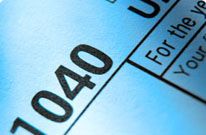Search results
Filing Individual Taxes - IRS
www.irs.govDeadline: April 18
- 1040 Form Instructions
- 1040-EZ Form Instructions
- 1040A Form Instructions
- 1040ES Form & Instr.
- Tax Tables Download
- Schedule A Form Instructions
- Schedule D Form Instructions
Learn how to complete Schedule D (Form 1040) to report capital gains and losses from various transactions. Find out what forms to use, what property is a capital asset, and what is a qualified opportunity fund.
- About Schedule D
Recent developments. Correction to the 2020 and 2021...
- 2023 Schedule D (Form 1040)
SCHEDULE D (Form 1040) Department of the Treasury Internal...
- Instructions for Schedule D
These instructions explain how to complete Schedule D (Form...
- Instructions
Instructions for Schedule D (Form 1041) (2023) Instructions...
- About Schedule D
- What Is An IRS Schedule D?
- Schedule D Instructions
- More Help Filling Out The Schedule D Tax Form
- GeneratedCaptionsTabForHeroSec
Schedule D (Form 1040) is a tax schedule from the IRS that attaches to the Form 1040, U.S. Individual Income Tax Return, Form 1040-SR, or Form 1040NR. It is used to help you calculate their capital gains or losses, and the amount of taxes owed. Computations from Schedule D are reported on the Form 1040, affecting your adjusted gross income.
Regarding Schedule D instructions, if you have any sales of capital assets, you must first complete Form 8949, Sales and Dispositions of Capital Assets. You’ll use the information from Form 8949 to complete Schedule D. 1. Use Part I for sales of short-term assets — held for one year or less. 2. Use Part II for sales of long-term assets — held for m...
If you need more help completing the Schedule D tax form, enlist help from H&R Block! Whether you make an appointment with one of our knowledgeable tax pros or choose one of our online tax filingproducts, you can count on H&R Block to help you get your taxes done and won.
Learn how to complete Schedule D (Form 1040) to calculate your capital gains or losses and taxes owed. Find out what information you need from Form 8949 and how to enter it on Schedule D.
Oct 19, 2023 · Most people use the Schedule D form to report capital gains and losses that result from the sale or trade of certain property during the year. In 2011, however, the Internal Revenue Service created a new form, Form 8949, that some taxpayers will have to file along with their Schedule D and 1040 forms.
People also ask
What is a Schedule D tax return?
How do I complete schedule D (Form 1040)?
How do I complete schedule D (Form 1041)?
What is a 1040 Schedule D?

